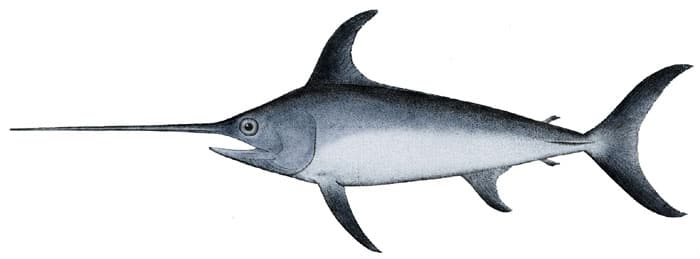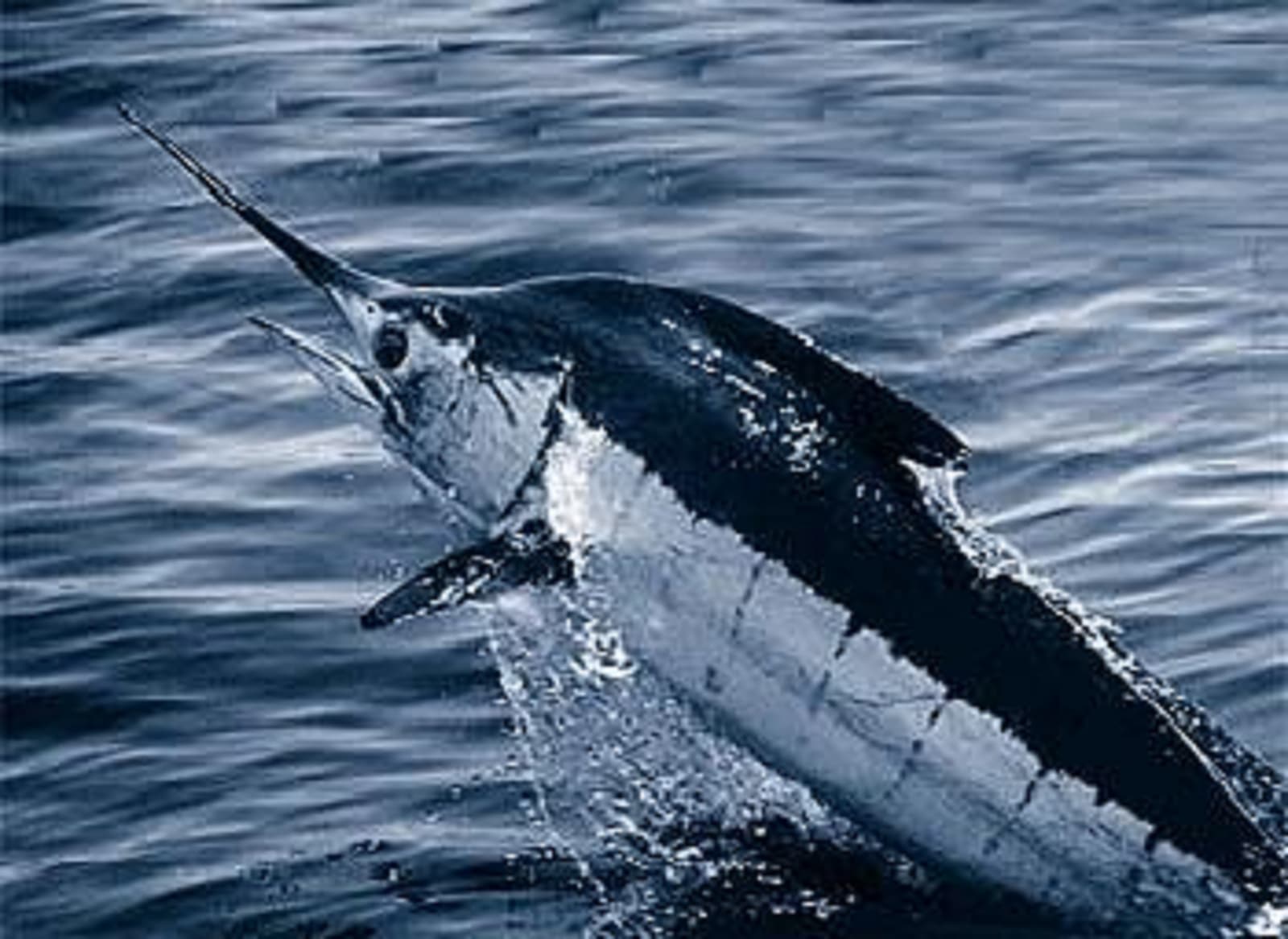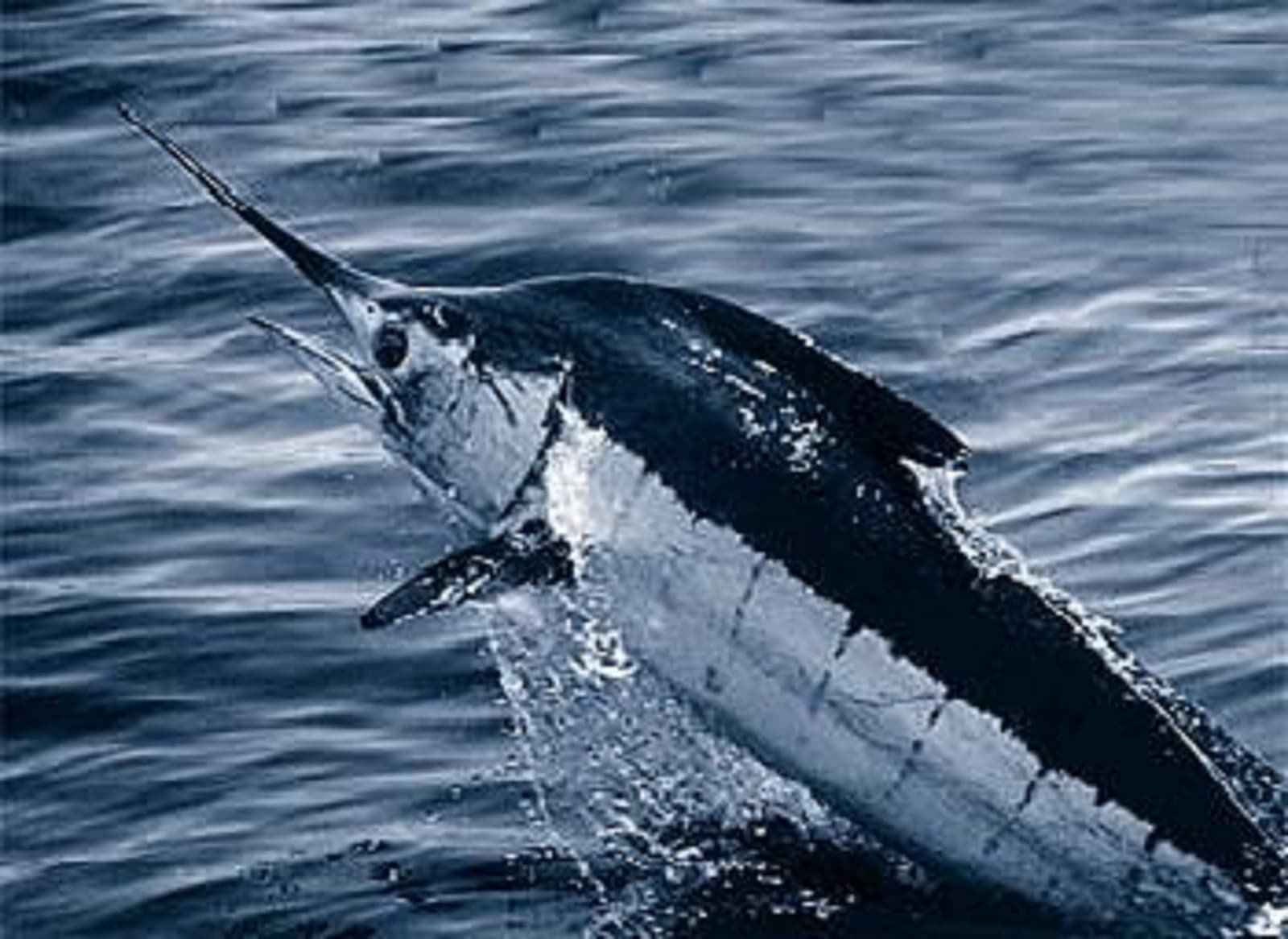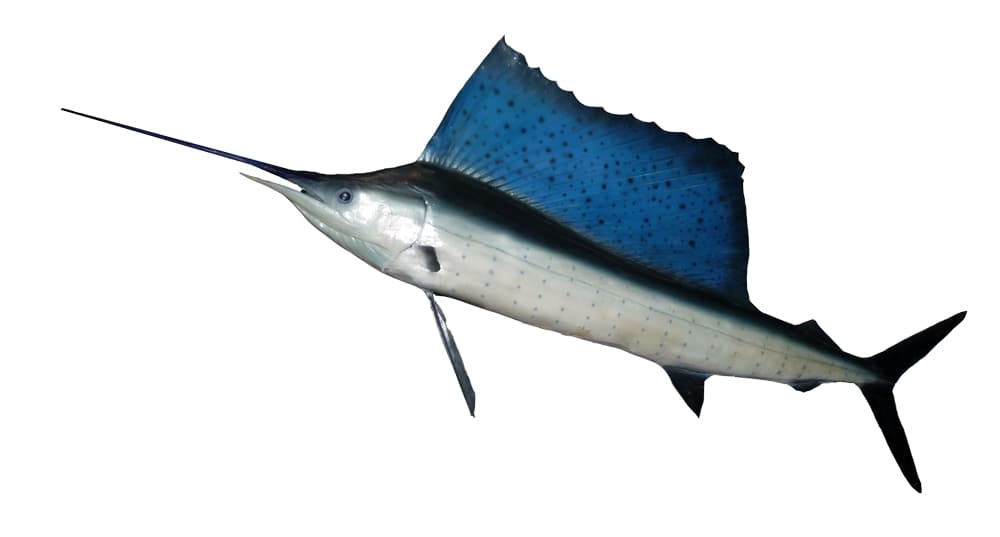Swordfish vs Marlin: A Complete Comparison
When comparing Swordfish vs Marlin, these oceanic giants share remarkable similarities but possess distinct characteristics that set them apart. While both are apex predators equipped with elongated bills, the Swordfish (Xiphias gladius) reaches lengths of 15 feet (4.5 meters) and weights up to 1,400 pounds (635 kg), whereas Blue Marlins can grow even larger, reaching 16 feet (4.9 meters) and weights exceeding 1,985 pounds (900 kg).
The most notable difference lies in their physical structure and hunting behavior. Swordfish possess a distinctly flat, sword-like bill and lack the pelvic fins found on marlins. Marlins, conversely, feature a more rounded spear-like bill and maintain their pelvic fins, which aid in their remarkable maneuverability during high-speed pursuits.

The Swordfish’s distinctive flat bill and streamlined body make it one of the ocean’s most efficient hunters, capable of reaching speeds up to 50 mph (80 km/h) during short bursts.

The Blue Marlin’s spectacular aerial displays and rounded bill distinguish it from its billfish cousin, with recorded speeds reaching an impressive 80 mph (129 km/h) in short bursts.
Key Differences Between Swordfish and Marlin
| Feature | Swordfish | Marlin |
|---|---|---|
| Bill Shape | Flat, sword-like | Round, spear-like |
| Maximum Size | 15 ft (4.5 m) | 16 ft (4.9 m) |
| Top Speed | 50 mph (80 km/h) | 80 mph (129 km/h) |
| Fins | No pelvic fins | Retractable pelvic fins |
| Coloration | Gray-brown, lighter belly | Blue-black, striped patterns |
| Hunting Style | Slashing and stunning | High-speed pursuit |
Habitat and Distribution
Swordfish and Marlin exhibit different habitat preferences despite both being pelagic species. Swordfish demonstrate remarkable temperature tolerance, diving to depths of 1,800 feet (549 meters) and enduring temperatures between 41°F to 81°F (5°C to 27°C). Marlins, particularly Blue Marlins, prefer warmer surface waters between 68°F to 86°F (20°C to 30°C) and rarely descend below 300 feet (91 meters).
Hunting and Feeding Behavior
The hunting strategies of these billfish reveal fascinating adaptations. Swordfish utilize their flat bills to slash through schools of fish, stunning or injuring prey before consuming them. They also possess a unique brain heating system that keeps their eyes and brain warmer than the surrounding water, enhancing their hunting efficiency in cold depths.
Marlins, by contrast, employ their rounded bills to spear or stun individual prey items, often working in groups to corral fish schools. Their superior speed and agility allow them to chase down fast-moving prey like tuna and mackerel.
Who Would Win in a Fight?
While both species are formidable predators, a matchup between a Swordfish and Marlin would likely favor the Marlin due to several advantages:
- Superior speed and agility
- Greater average size and mass
- More versatile hunting strategy
- Better maneuverability due to pelvic fins
- Higher burst energy for sustained combat
Conservation Status and Threats
Both species face significant challenges from commercial fishing and habitat degradation. Current IUCN classifications list:
- Swordfish: Least Concern (population stable in most regions)
- Blue Marlin: Vulnerable (population declining)
- Black Marlin: Data Deficient
- Striped Marlin: Near Threatened
Conservation efforts focus on implementing sustainable fishing practices and protecting critical breeding grounds for both species.
Fishing and Economic Impact
Sport fishing for both Swordfish and Marlin generates substantial economic activity in coastal regions worldwide. Marlin species, particularly Blue Marlin, are prized for their spectacular aerial displays and fighting ability, while Swordfish are valued both commercially and recreationally for their meat quality and challenging deep-water fishing techniques.











